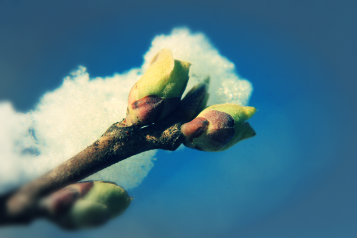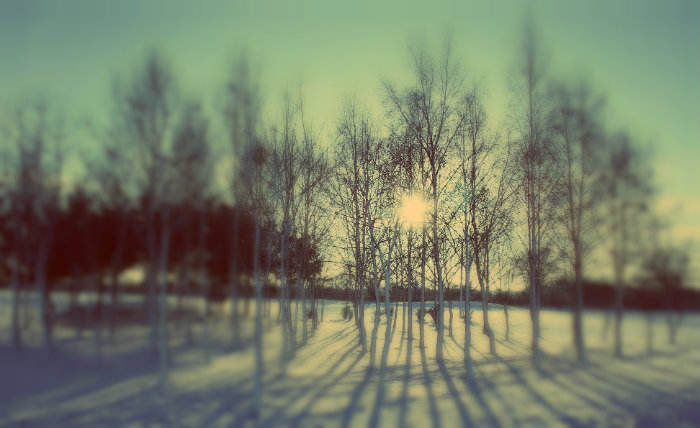Moving into 2018, we have all felt the bitter cold of winter. This season of raw, vast reflection is not an easy time for me, working primarily outdoors. I’m certain it is a challenging time for many as the cost to heat homes and maintain vehicles often increases in Winter. Many spiritual traditions offer guidance on how to use our training and observations in challenging times, and they are truly put to the test when times get rough. Yet, the intentions we set beginning the year anew can guide us to look more closely at our values and motivations for how we want to move forward.
The loss of a loved one can also be cold and challenging as our identities in relation to them become vulnerable and exposed, and much like winter, the season of grief that follows presents some real challenges. How can we warm our hearts and move on with our lives? The same activities in our daily lives go on, and they all reflect the absence of those we have lost as our memories tend to stay at the front of our awareness.
I was clearing a small area around a planting the other day, and found a two-year-old Carolina Silverbell, which has been competing for life against a variety of invasive species. The yellow-green buds on the small sapling promise new growth in Spring, and with a little help, it can have a successful growing season in 2018. Though it is still exposed, and has retreated somewhat in dormancy, the Silverbell is preparing itself for more life. Living and dying are not separate; both are certain and one depends on another. In order for new life to spring forth, other life must end. In the plant world, especially gardening, we could use compost as an example. The nutrients from decomposing plant matter feed the new seedlings in the garden. Likewise, in the mind, old habits and challenges become the opportunities for expanding our awareness and growing as people.

One interesting phenomenon that I have observed in my own mind, which has in the past been an occasion for frustration, is that even with change, the old patterns don’t disappear. Memories are triggered in new ways when I think I have overcome a habit, and suddenly the worry sets in, ready to defend me against unwanted feelings and consequences for my choices. I still sometimes dwell on mistakes of the past, wondering if I have really learned to make different choices. All of the hardships that I have endured are still right here, trying to show me the truth of my present circumstances. The intentions that I set for new ways of being are always challenged by the familiarity of routines that I have built both consciously and unconsciously, and if I am not careful, the comfort that these habits provide will numb me from the very vulnerability that promises change.
So, what to do, and how to let go? The spiritual tradition in which I practice offers guidance for the daily ritual of letting go, even just of momentary, seemingly mundane thoughts, sensations, and emotions. I have also learned in my many years of such practices that letting go is not an efforting to dismiss or cast aside that which is unwanted. With death and other major losses, this is a very useful reminder that I am not getting rid of the pain, the memories, the unpleasant emotions, nor the people from my past. They are all still right there, ever-present in my mind, worn like ruts in a cart path. It has occured to me that these beings are also trying to be seen, heard, or otherwise acknowledged, that they are a part of me, and that there is something unresolved in the messiness of life that cannot come to rest by ignoring or forgetting them. I am also aware that indulging their stories can lead me down mental and emotional pathways that get me lost or stuck, unable to perform some of my daily activities.
There was a time not so long ago in my life, that the idea of letting these things go seemed cruel, and perhaps even more painful than keeping them around for some sort of nostalgic value. But they cannot rest, and neither can I for as long as I continue the habit of letting them run amok in my consciousness. It has also taken some time for me to see these memories as impersonal, and to not identify so strongly with them or myself in terms of how I relate to my daily life. And, another useful practice, which goes by many names in many spiritual traditions, loving-kindness in mine, might shed some light on how to work with the challenge of letting go.
Knowing that those I have lost will continue to live on in my own heart and mind, I am reminded of how I might treat those beings with whom I am still living an outward life, and with whom I still have intentions of heartfelt kindness. In my current life, I can see many situations where I am ready to “move on”, but the others in my life are not. If I hold myself to where they are, then we both get stuck, and if I try to push them forward when they aren’t ready, then there is resentment on both sides. I have learned in dealing with friends and family when seemingly opposing viewpoints, postures, and other difficulties arise, that allowing them to have their viewpoint without challenging or indulging results in less friction between us. I have also learned that this is not the same as ignoring, which also engenders misunderstanding and hostility. So, my practice has turned toward love and acceptance, and while this too is not a surefire way to avoid hurt feelings, it also doesn’t leave us stuck wondering whether or not we acted appropriately in a challenging situation.
In our hearts and minds, our deceased loved ones may or may not be ready to move on, so why rush them? We can certainly show kindness and love by listening to their stories and acknowledging their lives and their present hardships. By allowing and accepting what they have to offer without getting stuck in their stories ourselves, we also offer a useful example for how to move on. This is certainly not easy, even less so without a practice in which we can become more comfortable with the processes involved, but it is a heart-warming way to see that we are still able to do our best while causing no further harm to ourselves or to them. So far my own practice with these ideas and techniques is fairly young, so I have no particular trove of definable results to report. I can say that I am far less overwhelmed by many of the unskillful interactions between my self and others, and that I am becoming less uncomfortable with being vulnerable despite the overwhelming urge to protect myself.
I am uncertain about any particular course of future action, as the landscape is always changing. I have skills and tools for removing the weeds that seek to overtake my carefully planted intentions, and I have ideas about how the landscape might look to be free of invasives. I hope for all that I have planted to grow beautiful, lush, and full, and I know that there will be obstacles and that there is no “final product” to expect. Yet, in stewarding the land and tending to my own heart and mind, I know that the work presents its own comforts and satisfactions, and that how I go about it, observed by others, offers great opportunity and merit to be shared by all. If I can create an inner sanctuary as vast and beautiful as the cemetery I tend, I know that those who come seeking refuge and reflection will find it. This lessens the burden for me of moving on, and fuels my own intentions moving forward, of letting go.
Carolina Memorial Sanctuary is a conservation and green cemetery. See its beauty for yourself and contact us to schedule a tour.

